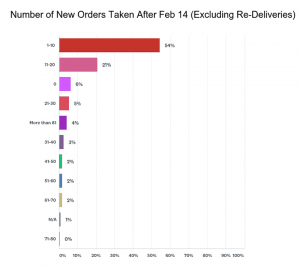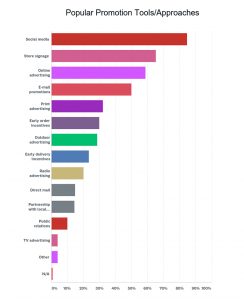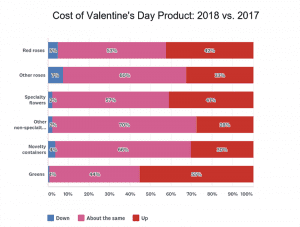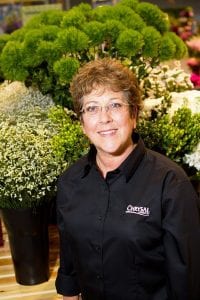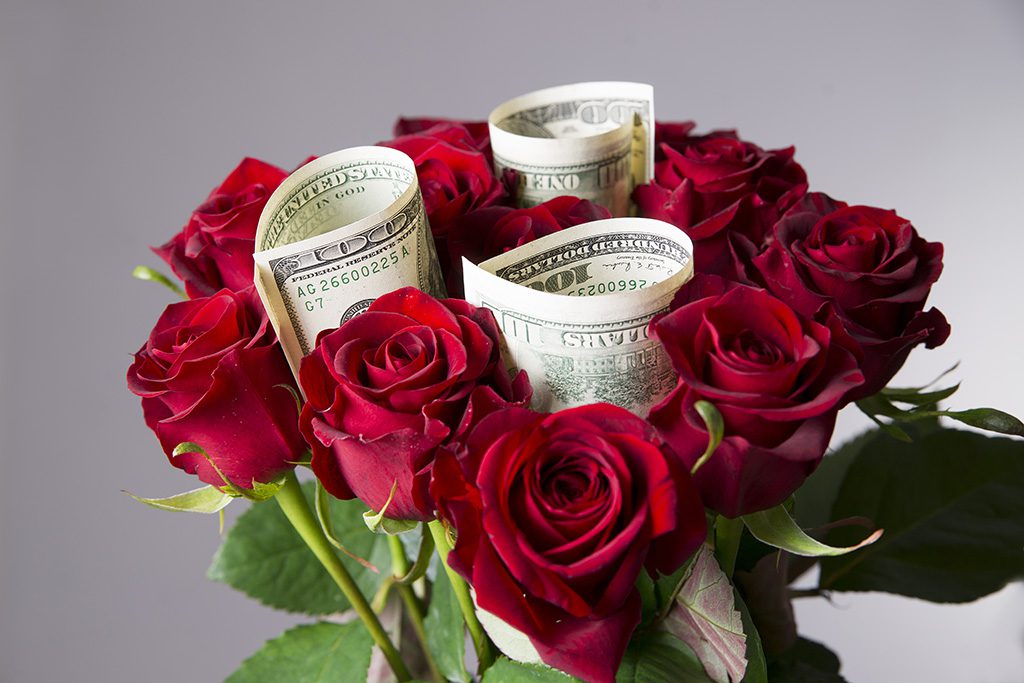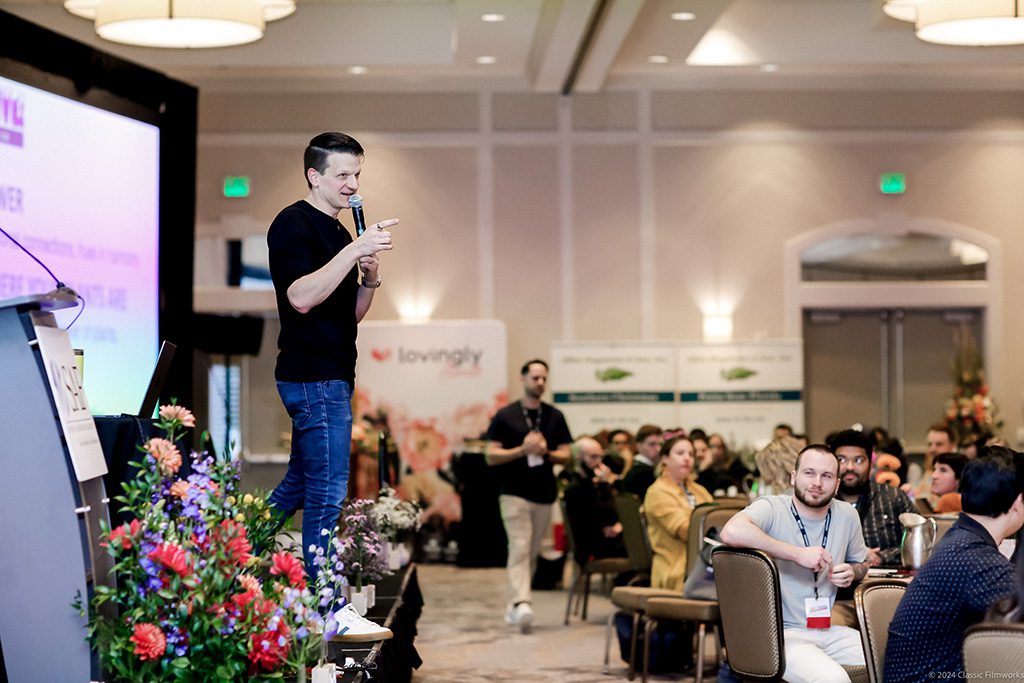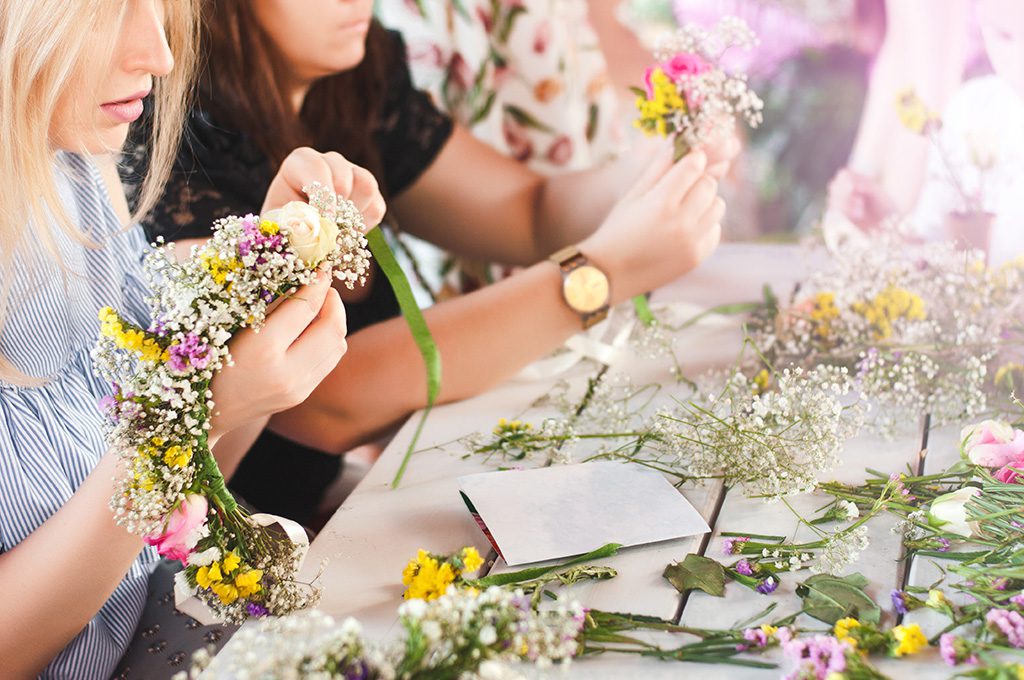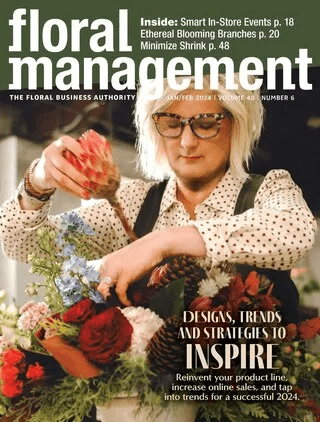Valentine’s Day was a success for many florists — but the Wednesday holiday was also a last-minute hustle.
That’s according to a Society of American Florists post-holiday member survey, which found that, on average, 56 percent of retail florists’ holiday orders came in on Valentine’s Day itself and 80 percent of orders were delivered on Feb. 14. In 2017, when the holiday fell on a Tuesday, respondents said nearly 38 percent of orders came in on Valentine’s Day and 79 percent of holiday orders were delivered on Valentine’s Day.
In Arizona, a florist speculated the day of the week may have played a factor. “Last year, when Valentine’s Day landed on a Tuesday, I saw more early deliveries on Monday to client’s work, to start the week off right,” she wrote. “This year, since it landed on a Wednesday, few clients wanted it early. Most wanted it on the day of. I believe this will be the same for next year when Valentine’s Day falls on a Thursday.”
Meanwhile, a trend of orders coming in after the holiday continues: More than half of respondents (54 percent) said they took up to 10 new holiday orders, excluding re-deliveries, after Feb. 14, a number in line with 2017 returns; about 21 percent said they took 11 to 20 such orders.
In write-in, anecdotal responses, a number of florists noted those late-coming orders.
“Every year, people wait later and later to order for every holiday and event,” wrote a florist in Kentucky. “[It] makes it harder to shift them earlier for delivery.”
“Florists are the source of last resort,” a florist in Ohio wrote. “They call us after they try the on line order-gatherers.”
Another florist in New Mexico noted, “The orders did not start pouring in until Monday and Tuesday. People wait until the last minute!”
Some florists were able to push promotions that spread out deliveries: 30 percent of respondents promoted early order incentives this year, and 23 percent offered early delivery incentives.
Other survey highlights:
- Fifty-five percent of respondents said they had to stop taking orders and/or turn away business this year.
- About 57 percent of respondents said their overall shop promotional efforts stayed the same this year, compared to 2017. About 29 percent increased their efforts. Social media proved again to be a popular tool for promotion: 85 percent of respondents used the platforms (including Facebook, Instagram, Twitter, and more) to connect with customers. Other popular resources include: store signage and posters (65 percent); online ads (59 percent) and print advertising (32 percent).
- Fifty-three percent of respondents said the cost of red roses was about the same this year; 42 percent said costs were higher. Sixty percent said the cost of other, non-red roses was on track with 2017; about a third said those costs were higher.
- Fifty-seven percent said specialty flowers were about the same, cost-wise, this year; 41 percent said they were more expensive. Seventy percent said the cost of other, non-specialty flowers was about equal to 2017 numbers and 66 percent said novelty containers were about the same, too.
- 55 percent of respondents noted an increase in the prices of greens, which was likely expected: Florida growers, still recovering from both Hurricane Matthew and Irma, had warned of shortages leading up to the holiday.
- Seventy-five percent of respondents said customers “sometimes” (39 percent) or “rarely” (36 percent) ask where flowers come from. (Respondents were asked to consider the question on a year-round, not holiday, basis.)
On average, respondents hired eight additional workers for Valentine’s Day this year
Read more about this year’s survey.



